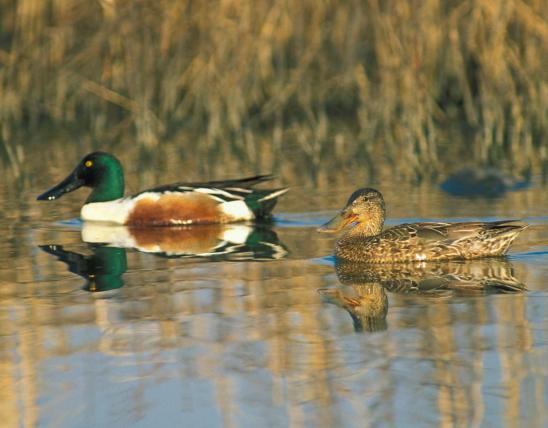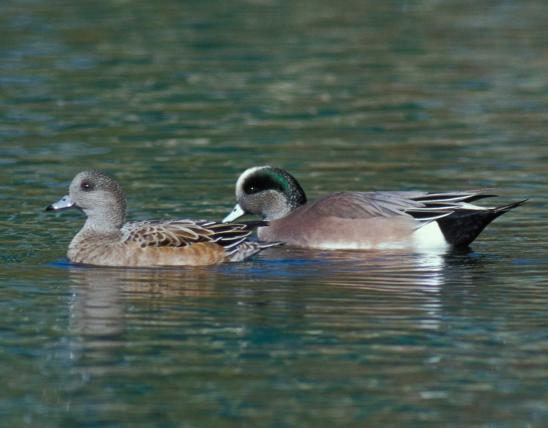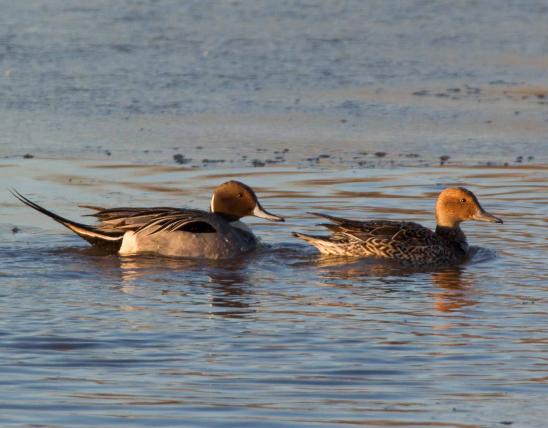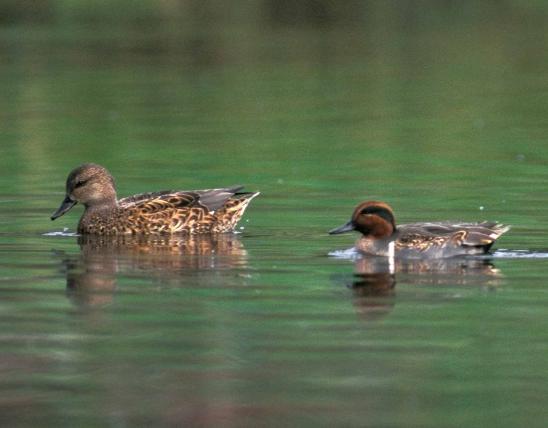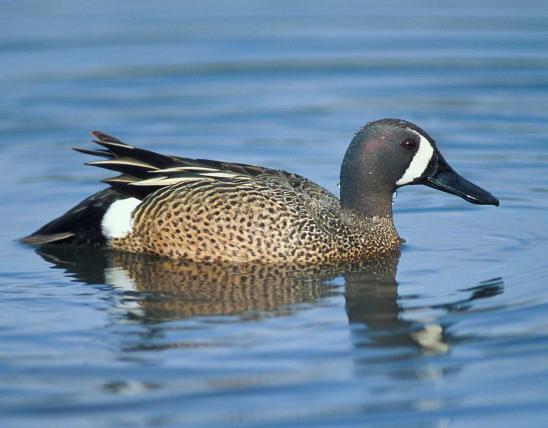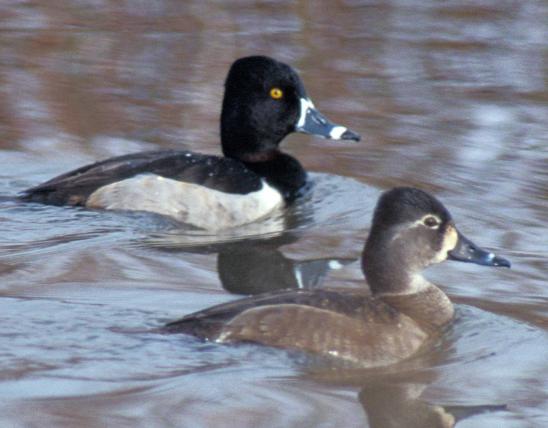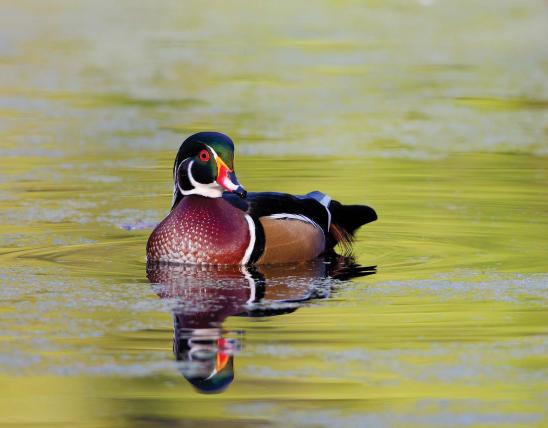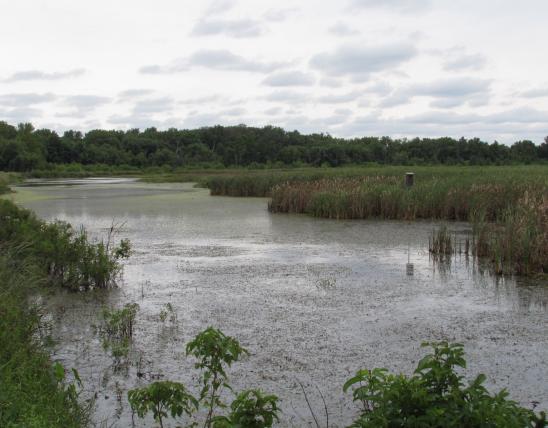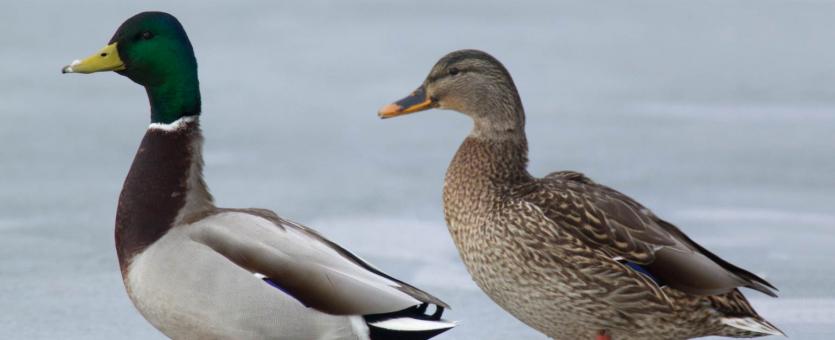
Adult male (drake) mallards are easily identified by their green head, chestnut breast, gray body, black back, and white-bordered blue speculum, which is the wing patch located on the secondary feathers. The females (hens) are brownish with an orange bill with dark saddle markings. Male vocalizations include a loud graeb-graeb or a whistle. Female vocalizations include a descending quacking sound (the males don’t quack) and various softer kegs and hey-hey-heys.
Similar species: The American black duck (A. rubripes) is an uncommon migrant or winter resident in Missouri. It has very dark brown body feathers, a light brown head, a greenish bill, and a purple speculum.
Length: 23 inches (tip of bill to tip of tail).
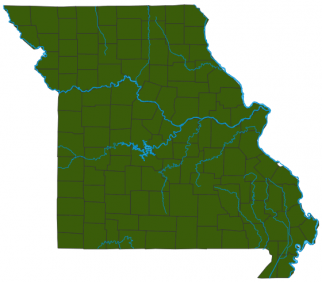
Statewide.
Habitat and Conservation
Common migrant on lakes, rivers, ponds, and marshes. Locally uncommon summer resident, nesting along lakeshores and in marshes statewide. Very common in winter, even during severely cold weather when most other waterfowl migrate farther south. Mallards are perhaps the most common “dabbling duck” or “puddle duck” in America. They dip their heads underwater, the tail pointed up, and don’t dive. They can take flight directly from the water’s surface without needing a running start.
Food
Forages for seeds, grass, aquatic vegetation, and invertebrates on lakes, rivers, ponds, and marshes. Mallards and other dabbling ducks forage in shallow water by tipping forward so the head is underwater and the tail points up (and not by diving completely underwater).
Status
Common transient and winter resident; uncommon summer resident.
Life Cycle
Mallards form pairs in fall. The females make nests and lay eggs in early spring. Nests are usually built on the ground of grasses, twigs, and other vegetation, and are lined with down from the mother’s breast. Clutches comprise 1–13 eggs; incubation lasts 23–30 days. Newly hatched chicks are covered with down and can follow their mother around within a day. The males undergo a molt in late spring that leaves them flightless, drab, and secretive for about a month; this is called “eclipse plumage.”
Human Connections
Mallards are also very familiar to people in Eurasia, for they eagerly take handouts of bread at lakes in public parks throughout the Northern Hemisphere. They have been hunted for thousands of years and are the parent species that most domestic ducks were bred from.
Ecosystem Connections
Mallards are so widespread and successful that some of their far-flung populations have diverged enough genetically that they may be considered not just separate subspecies, but separate species. They also may breed with closely related duck species, resulting in hybrid offspring that can be hard to identify.
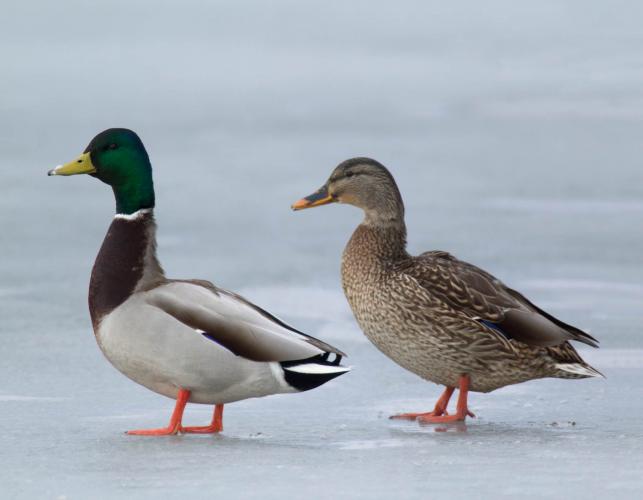
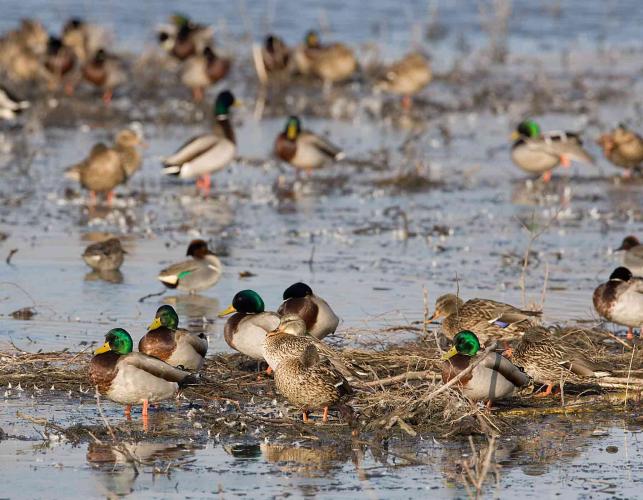
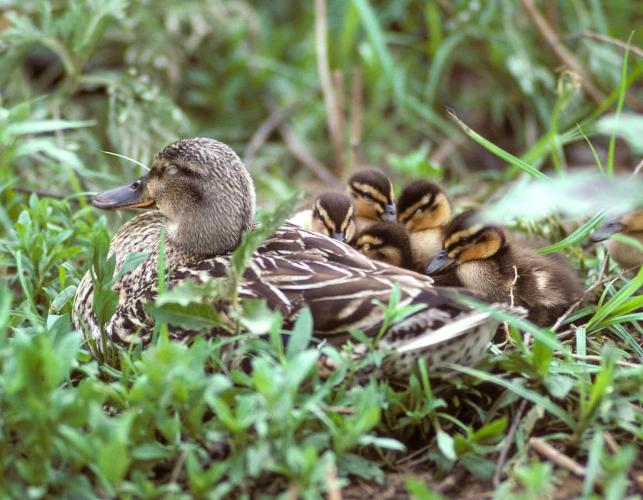

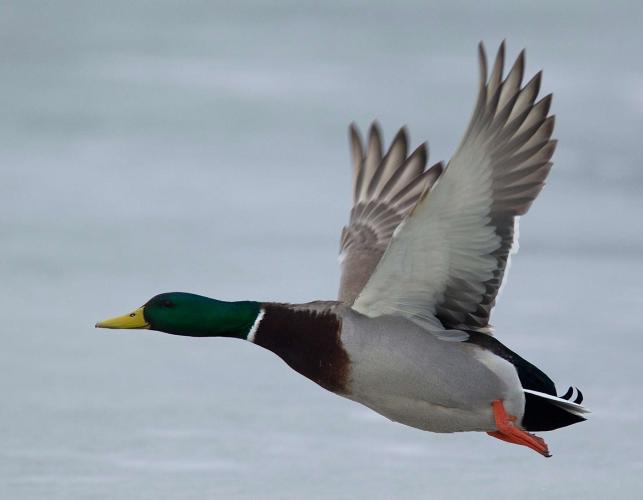
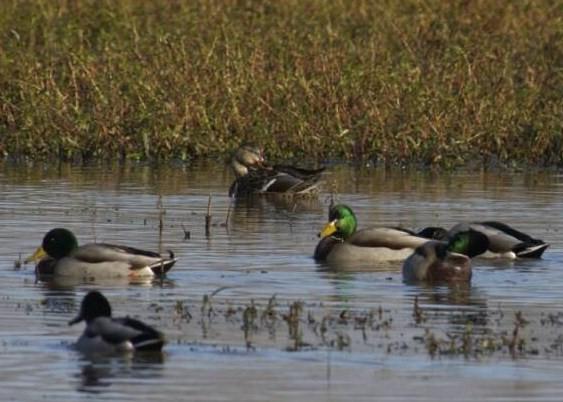
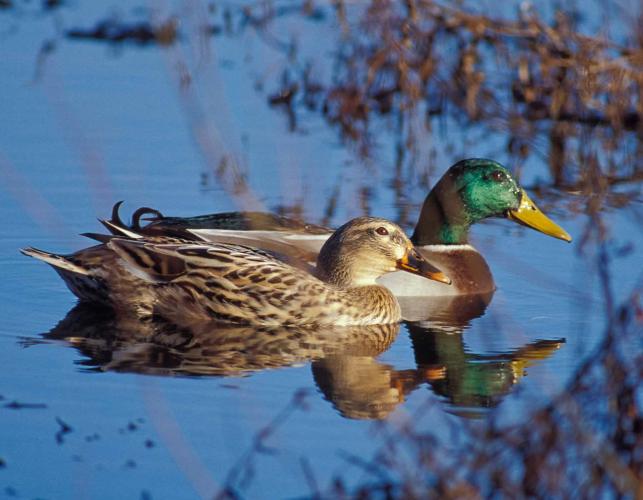
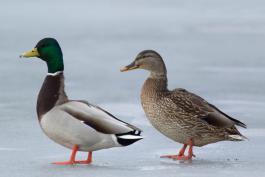
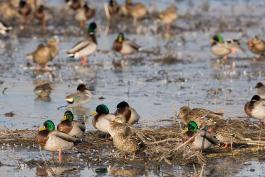
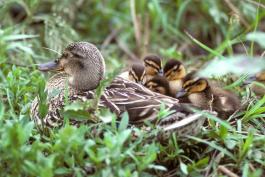

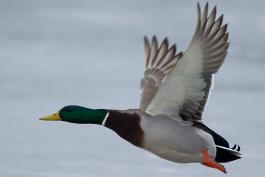
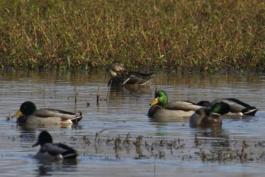
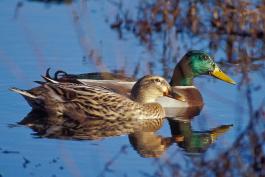
Where to See Species
About 350 species of birds are likely to be seen in Missouri, though nearly 400 have been recorded within our borders. Most people know a bird when they see one — it has feathers, wings, and a bill. Birds are warm-blooded, and most species can fly. Many migrate hundreds or thousands of miles. Birds lay hard-shelled eggs (often in a nest), and the parents care for the young. Many communicate with songs and calls.






















